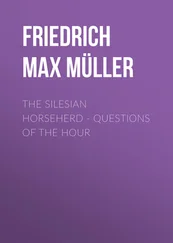Friedrich Max Müller - Chips from a German Workshop, Volume 1
Здесь есть возможность читать онлайн «Friedrich Max Müller - Chips from a German Workshop, Volume 1» — ознакомительный отрывок электронной книги совершенно бесплатно, а после прочтения отрывка купить полную версию. В некоторых случаях можно слушать аудио, скачать через торрент в формате fb2 и присутствует краткое содержание. Жанр: foreign_prose, foreign_antique, на английском языке. Описание произведения, (предисловие) а так же отзывы посетителей доступны на портале библиотеки ЛибКат.
- Название:Chips from a German Workshop, Volume 1
- Автор:
- Жанр:
- Год:неизвестен
- ISBN:нет данных
- Рейтинг книги:3 / 5. Голосов: 1
-
Избранное:Добавить в избранное
- Отзывы:
-
Ваша оценка:
- 60
- 1
- 2
- 3
- 4
- 5
Chips from a German Workshop, Volume 1: краткое содержание, описание и аннотация
Предлагаем к чтению аннотацию, описание, краткое содержание или предисловие (зависит от того, что написал сам автор книги «Chips from a German Workshop, Volume 1»). Если вы не нашли необходимую информацию о книге — напишите в комментариях, мы постараемся отыскать её.
Chips from a German Workshop, Volume 1 — читать онлайн ознакомительный отрывок
Ниже представлен текст книги, разбитый по страницам. Система сохранения места последней прочитанной страницы, позволяет с удобством читать онлайн бесплатно книгу «Chips from a German Workshop, Volume 1», без необходимости каждый раз заново искать на чём Вы остановились. Поставьте закладку, и сможете в любой момент перейти на страницу, на которой закончили чтение.
Интервал:
Закладка:
If we turn to the Semitic world, we find that although no new materials have been discovered from which to study the ancient religion of the Jews, yet a new spirit of inquiry has brought new life into the study of the sacred records of Abraham, Moses, and the Prophets; and the recent researches of Biblical scholars, though starting from the most opposite points, have all helped to bring out the historical interest of the Old Testament, in a manner not dreamt of by former theologians. The same may be said of another Semitic religion, the religion of Mohammed, since the Koran and the literature connected with it were submitted to the searching criticism of real scholars and historians. Some new materials for the study of the Semitic religions have come from the monuments of Babylon and Nineveh. The very images of Bel and Nisroch now stand before our eyes, and the inscriptions on the tablets may hereafter tell us even more of the thoughts of those who bowed their knees before them. The religious worship of the Phenicians and Carthaginians has been illustrated by Movers from the ruins of their ancient temples, and from scattered notices in classical writers; nay, even the religious ideas of the Nomads of the Arabian peninsula, previous to the rise of Mohammedanism, have been brought to light by the patient researches of Oriental scholars.
There is no lack of idols among the ruined and buried temples of Egypt with which to reconstruct the pantheon of that primeval country: nor need we despair of recovering more and more of the thoughts buried under the hieroglyphics of the inscriptions, or preserved in hieratic and demotic MSS., if we watch the brilliant discoveries that have rewarded the patient researches of the disciples of Champollion.
Besides the Aryan and Semitic families of religion, we have in China three recognised forms of public worship, the religion of Confucius, that of Lao-tse, and that of Fo (Buddha); and here, too, recent publications have shed new light, and have rendered an access to the canonical works of these religions, and an understanding of their various purports, more easy, even to those who have not mastered the intricacies of the Chinese language.
Among the Turanian nations, a few only, such as the Finns, and the Mongolians, have preserved some remnants of their ancient worship and mythology, and these too have lately been more carefully collected and explained by d'Ohson, Castrèn, and others.
In America the religions of Mexico and Peru had long attracted the attention of theologians; and of late years the impulse imparted to ethnological researches has induced travellers and missionaries to record any traces of religious life that could be discovered among the savage inhabitants of Africa, America, and the Polynesian islands.
It will be seen from these few indications, that there is no lack of materials for the student of religion; but we shall also perceive how difficult it is to master such vast materials. To gain a full knowledge of the Veda, or the Zend-Avesta, or the Tripi t aka, of the Old Testament, the Koran, or the sacred books of China, is the work of a whole life. How then is one man to survey the whole field of religious thought, to classify the religions of the world according to definite and permanent criteria, and to describe their characteristic features with a sure and discriminating hand?
Nothing is more difficult to seize than the salient features, the traits that constitute the permanent expression and real character of a religion. Religion seems to be the common property of a large community, and yet it not only varies in numerous sects, as language does in its dialects, but it really escapes our firm grasp till we can trace it to its real habitat, the heart of one true believer. We speak glibly of Buddhism and Brahmanism, forgetting that we are generalizing on the most intimate convictions of millions and millions of human souls, divided by half the world and by thousands of years.
It may be said that at all events where a religion possesses canonical books, or a definite number of articles, the task of the student of religion becomes easier, and this, no doubt, is true to a certain extent. But even then we know that the interpretation of these canonical books varies, so much so that sects appealing to the same revealed authorities, as, for instance, the founders of the Vedânta and the Sânkhya systems, accuse each other of error, if not of wilful error or heresy. Articles too, though drawn up with a view to define the principal doctrines of a religion, lose much of their historical value by the treatment they receive from subsequent schools; and they are frequently silent on the very points which make religion what it is.
A few instances may serve to show what difficulties the student of religion has to contend with, before he can hope firmly to grasp the facts on which his theories are to be based.
Roman Catholic missionaries who had spent their lives in China, who had every opportunity, while staying at the court of Pekin, of studying in the original the canonical works of Confucius and their commentaries, who could consult the greatest theologians then living, and converse with the crowds that thronged the temples of the capital, differed diametrically in their opinions as to the most vital points in the state religion of China. Lecomte, Fouquet, Prémare, and Bouvet thought it undeniable that Confucius, his predecessors and his disciples, had entertained the noblest ideas on the constitution of the universe, and had sacrificed to the true God in the most ancient temple of the earth. According to Maigrot, Navarette, on the contrary, and even according to the Jesuit Longobardi, the adoration of the Chinese was addressed to inanimate tablets, meaningless inscriptions, or, in the best case, to coarse ancestral spirits and beings without intelligence. 2 2 Abel Rémusat, 'Mélanges,' p. 162.
If we believe the former, the ancient deism of China approached the purity of the Christian religion; if we listen to the latter, the absurd fetichism of the multitude degenerated amongst the educated, into systematic materialism and atheism. In answer to the peremptory texts quoted by one party, the other adduced the glosses of accredited interpreters, and the dispute of the missionaries who had lived in China and knew Chinese, had to be settled in the last instance by a decision of the see of Rome.
There is hardly any religion that has been studied in its sacred literature, and watched in its external worship with greater care than the modern religion of the Hindus, and yet it would be extremely hard to give a faithful and intelligible description of it. Most people who have lived in India would maintain that the Indian religion, as believed in and practised at present by the mass of the people, is idol worship and nothing else. But let us hear one of the mass of the people, a Hindu of Benares, who in a lecture delivered before an English and native audience defends his faith and the faith of his forefathers against such sweeping accusations. 'If by idolatry,' he says, "is meant a system of worship which confines our ideas of the Deity to a mere image of clay or stone, which prevents our hearts from being expanded and elevated with lofty notions of the attributes of God, if this is what is meant by idolatry, we disclaim idolatry, we abhor idolatry, and deplore the ignorance or uncharitableness of those that charge us with this grovelling system of worship.... But if, firmly believing, as we do, in the omnipresence of God, we behold, by the aid of our imagination, in the form of an image any of his glorious manifestations, ought we to be charged with identifying them with the matter of the image, whilst during those moments of sincere and fervent devotion, we do not even think of matter? If at the sight of a portrait of a beloved and venerated friend no longer existing in this world, our heart is filled with sentiments of love and reverence; if we fancy him present in the picture, still looking upon us with his wonted tenderness and affection, and then indulge our feelings of love and gratitude, should we be charged with offering the grossest insult to him—that of fancying him to be no other than a piece of painted paper?… We really lament the ignorance or uncharitableness of those who confound our representative worship with the Phenician, Grecian, or Roman idolatry as represented by European writers, and then charge us with polytheism in the teeth of thousands of texts in the Purâ n as, declaring in clear and unmistakable terms that there is but one God who manifests Himself as Brahma, Vish n u, and Rudra (Siva), in His functions of creation, preservation, and destruction." 3 3 The modern pandit's reply to the missionary who accuses him of polytheism is: "O, these are only various manifestations of the one God; the same as, though the sun be one in the heavens, yet he appears in multi-form reflections upon the lake. The various sects are only different entrances to the one city." See W. W. Hunter, Annals of Rural Bengal , p. 116.
Интервал:
Закладка:
Похожие книги на «Chips from a German Workshop, Volume 1»
Представляем Вашему вниманию похожие книги на «Chips from a German Workshop, Volume 1» списком для выбора. Мы отобрали схожую по названию и смыслу литературу в надежде предоставить читателям больше вариантов отыскать новые, интересные, ещё непрочитанные произведения.
Обсуждение, отзывы о книге «Chips from a German Workshop, Volume 1» и просто собственные мнения читателей. Оставьте ваши комментарии, напишите, что Вы думаете о произведении, его смысле или главных героях. Укажите что конкретно понравилось, а что нет, и почему Вы так считаете.












